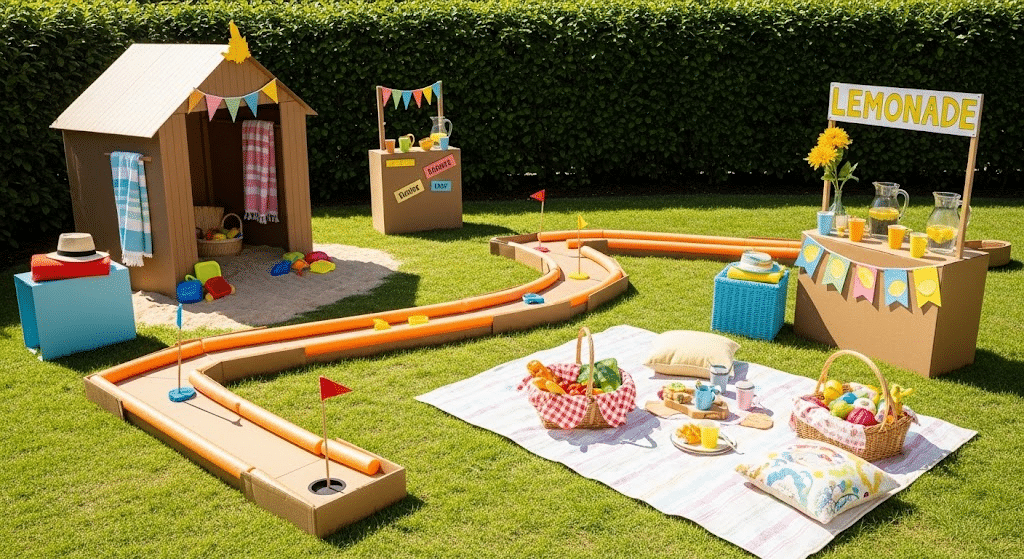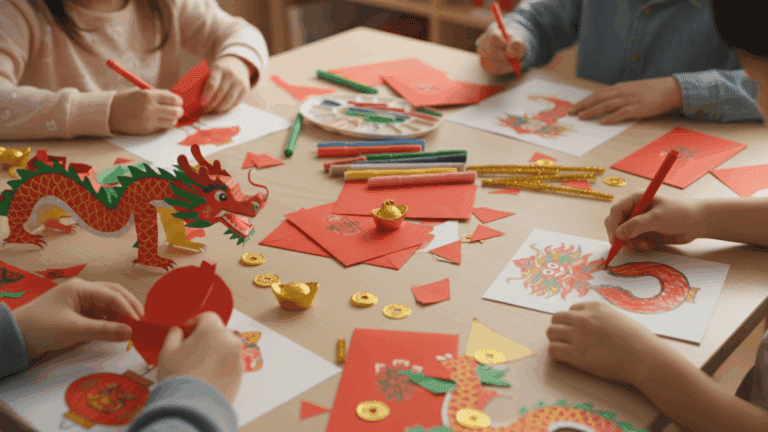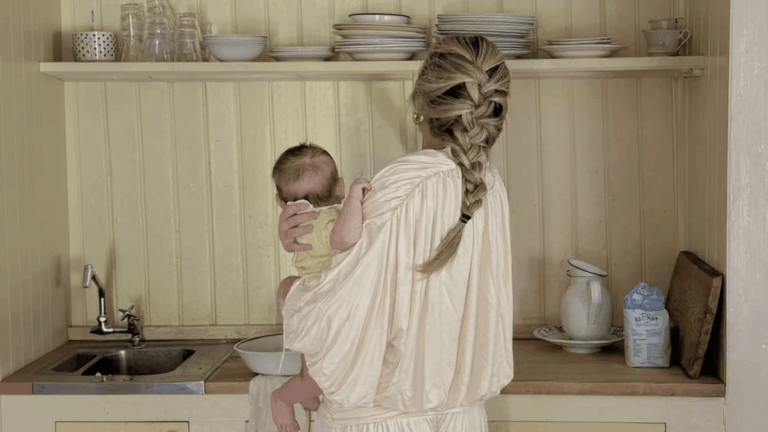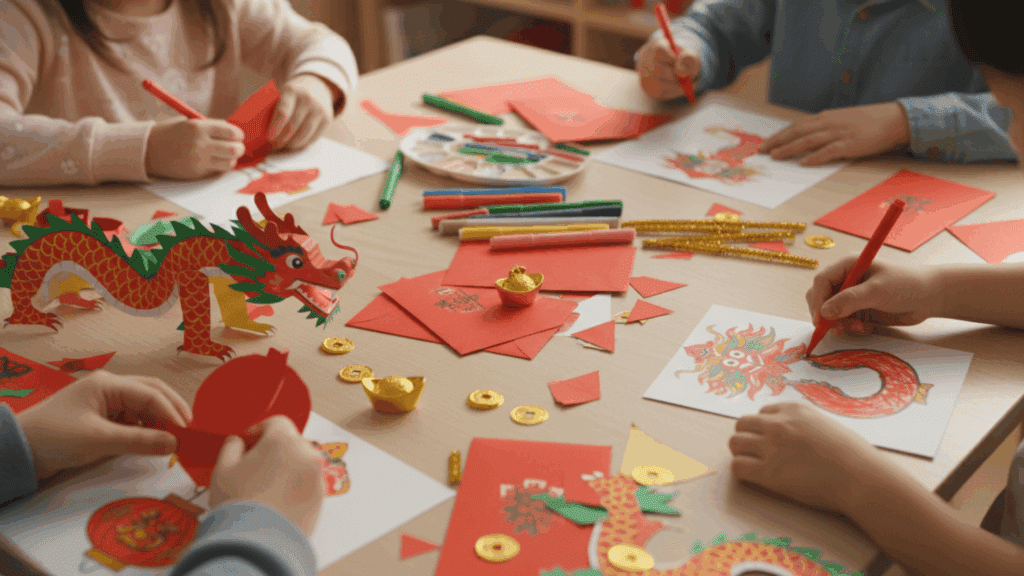Kids crave creative outlets to express themselves, and parents want activities that support their child’s growth. Yet finding engaging dramatic play ideas that truly captivate little ones can feel challenging.
Dramatic play offers a powerful solution. It builds emotional intelligence, sparks creativity, and strengthens communication skills, especially for preschoolers who learn best through hands-on exploration.
This post promises something special. You’ll find simple, joyful dramatic play ideas that change ordinary moments into magical experiences.
Each activity encourages children to step into different roles, express feelings, and build confidence. Get ready to see your child’s imagination come alive with these playful, practical suggestions they’ll absolutely love.
Why Dramatic Play Fuels Development?
Research shows dramatic play acts like a training ground for young minds. When children pretend, their brains work overtime to process new experiences and build essential skills.
Language development flourishes as kids practice vocabulary, storytelling, and conversation.
They experiment with different voices and learn to express complex ideas through role-playing. Social-emotional learning happens naturally as children explore feelings, practice empathy, and learn to understand others’ perspectives.
They process their own emotions in a safe, playful environment. Problem-solving skills strengthen as kids face pretend challenges and create solutions.
Executive functioning improves through planning activities, following rules, and managing multiple storylines. This type of play literally rewires the brain for better focus and self-control.
Foundations First: Setting Up a Dramatic Play Environment
Creating the right environment makes all the difference in dramatic play success. Parents and educators need practical guidelines to build spaces that inspire creativity while keeping children safe.
| Element | Key Considerations | Best Practices |
|---|---|---|
| Space Selection | Choose flexible areas that can change easily | Living room corners, classroom centers, or outdoor patios work well. Avoid cramped spaces. |
| Safety & Supervision | Keep sight lines clear and remove hazards | Use soft materials, secure loose items, and maintain adult visibility at all times. |
| Props & Materials | Balance simple items with themed sets | Scarves, boxes, and kitchen utensils spark more creativity than expensive themed toys. |
| Theme Rotation | Change setups every 1-2 weeks | Rotate between doctor’s office, restaurant, grocery store, and family home scenarios. |
| Storage | Keep materials accessible but organized | Use clear bins and low shelves so children can choose and clean up independently. |
Dramatic Play Ideas for Creative Kids
These dramatic play ideas convert ordinary spaces into worlds of imagination. Each setup encourages children to step into different roles while building important life skills.
1. Animal Hospital
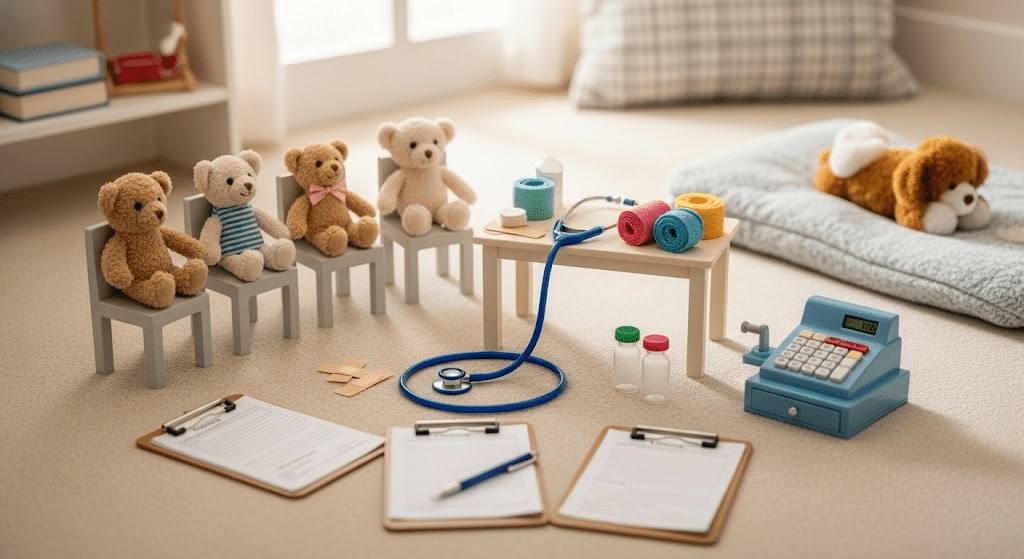
Children become veterinarians caring for sick stuffed animals. Kids love this theme because it lets them be helpful healers while practicing gentle care.
- How to Set It Up: Create a waiting area with chairs and a reception desk. Set up an examination table using a small table or box. Add a “surgery” area with blankets for recovery.
- Helpful Props & Resources: Stuffed animals, toy stethoscope, bandages, empty medicine bottles, clipboards with paper, and a cash register or calculator.
2. Bakery Shop
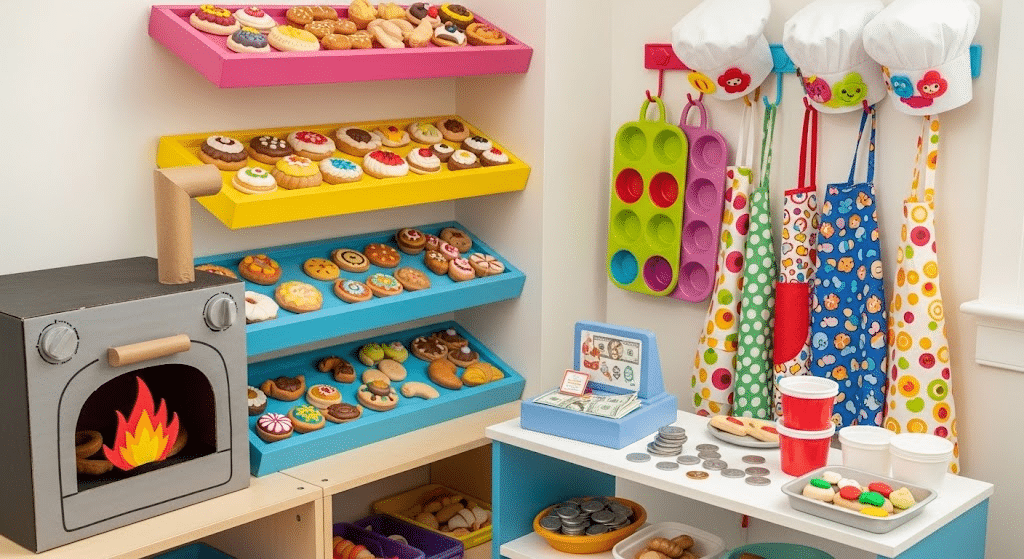
Little bakers create pretend treats and serve customers. This theme appeals to children’s love of cooking and helps them practice math through measuring and counting.
- How to Set It Up: Use play kitchen or cardboard boxes as ovens. Create a display case with shelves. Set up a checkout counter with a cash register area.
- Helpful Props & Resources: Play dough, cookie cutters, muffin tins, aprons, chef hats, pretend money, order pads, and empty food containers for decoration.
3. Space Station
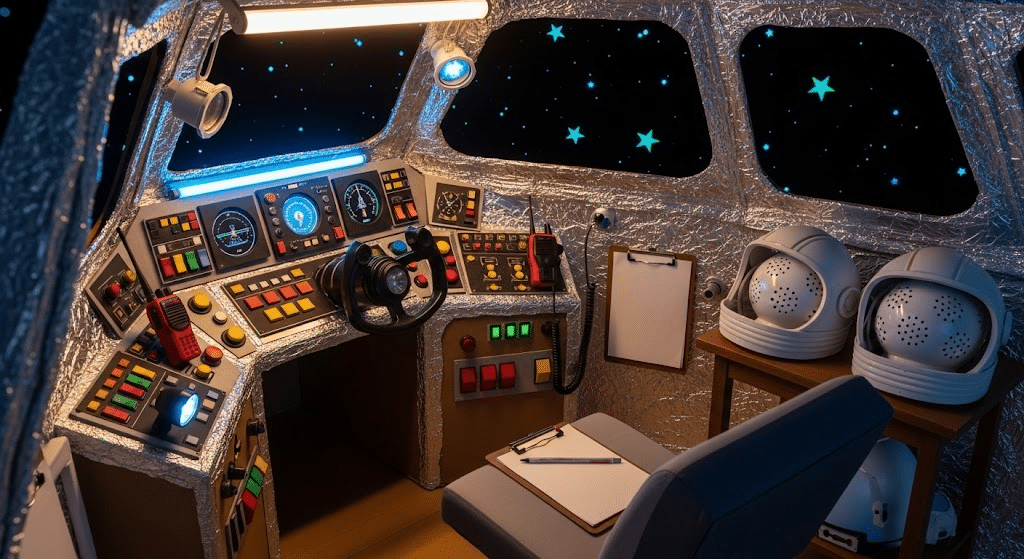
Young astronauts explore the galaxy and conduct space missions. Children are drawn to this theme because it combines science learning with limitless imagination.
- How to Set It Up: Use large cardboard boxes as spacecraft. Create control panels with buttons and switches. Add a communication center with phones or walkie-talkies.
- Helpful Props & Resources: Aluminum foil, flashlights, space helmets (colanders work great), clipboards for mission logs, and glow-in-the-dark stars for decoration.
4. Firefighter Headquarters
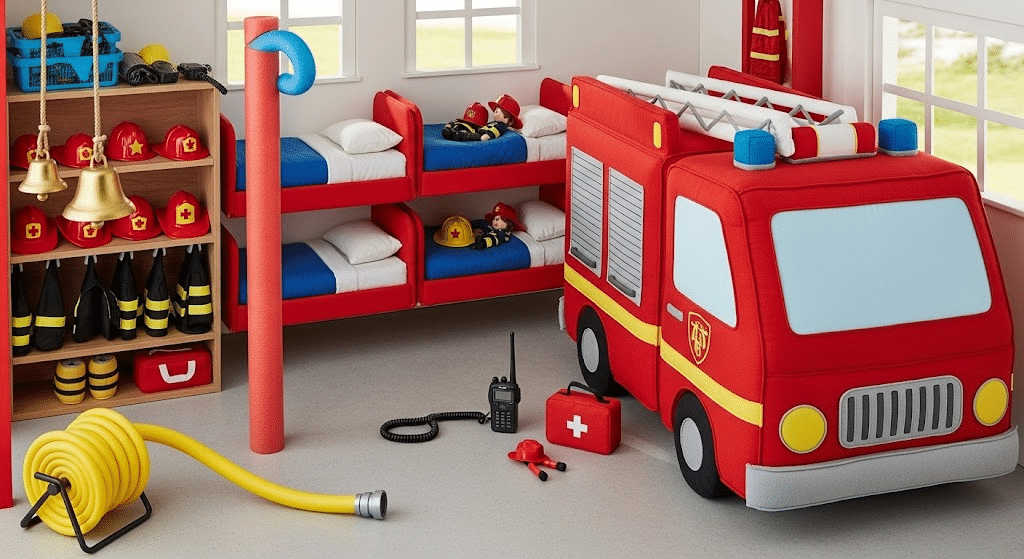
Brave firefighters respond to emergency calls and save the day. Kids love being heroes and this theme teaches them about community helpers and safety.
- How to Set It Up: Create a fire station with sleeping quarters, equipment storage, and a vehicle bay. Use red fabric or paper to make a fire truck.
- Helpful Props & Resources: Fire hats, red clothing, garden hose (disconnected), bells, walkie-talkies, first aid kit, and a pole (pool noodle) for sliding down.
5. Camping Experience
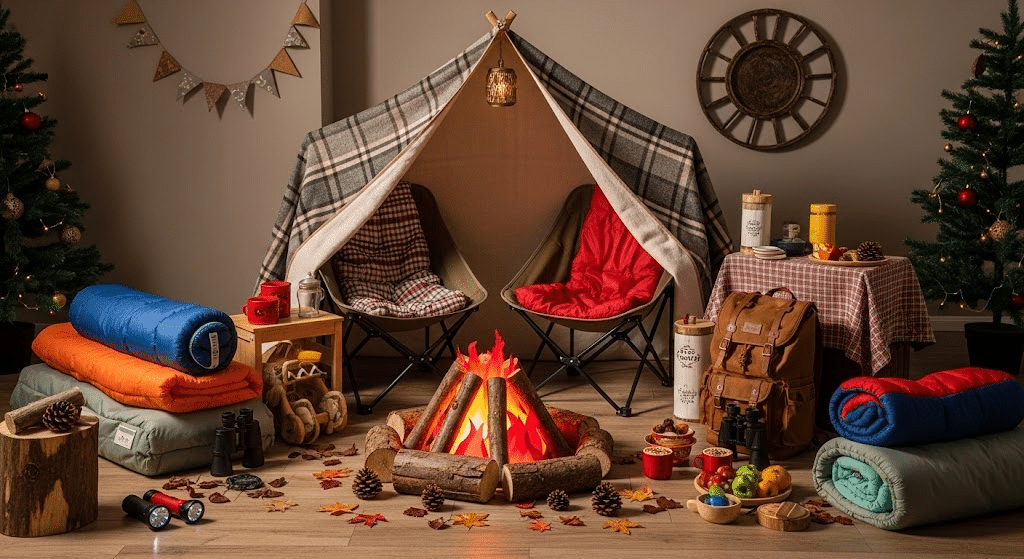
Outdoor enthusiasts set up camp and explore nature indoors. This theme captivates children because it brings outdoor fun inside and encourages storytelling around campfires.
- How to Set It Up: Build a tent using blankets and chairs. Create a campfire with logs and red/orange fabric. Set up a nature exploration area.
- Helpful Props & Resources: Sleeping bags, flashlights, binoculars, maps, backpacks, pretend food for camping meals, and nature items like pinecones and leaves.
6. Puppet Theatre
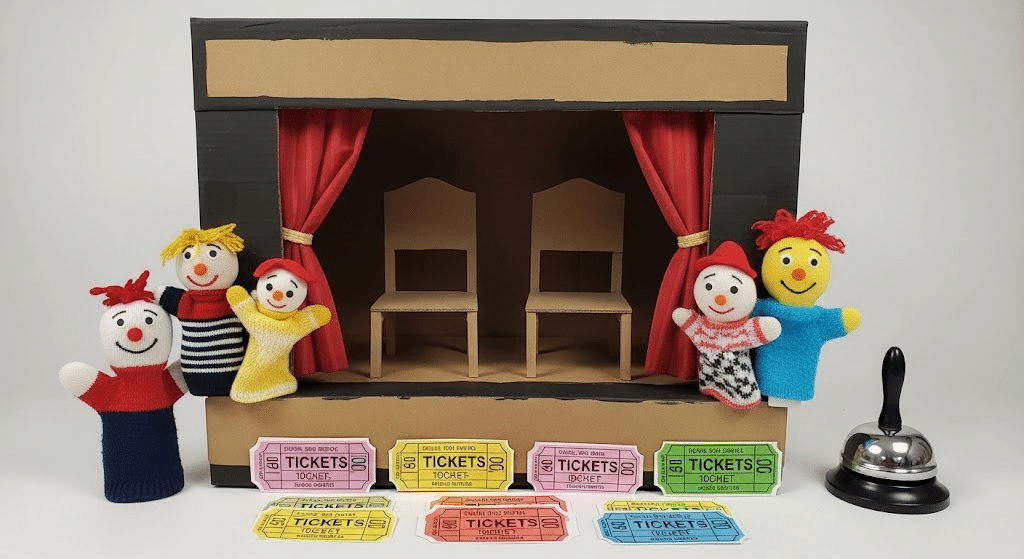
Young performers create shows and entertain audiences. Children love this because they can be both storytellers and entertainers while building confidence.
- How to Set It Up: Use a large cardboard box or hang a sheet between two chairs. Create a stage area with curtains that open and close.
- Helpful Props & Resources: Sock puppets, hand puppets, small dolls, fabric scraps for costumes, a bell for show announcements, and tickets for the audience.
7. Superhero Headquarters
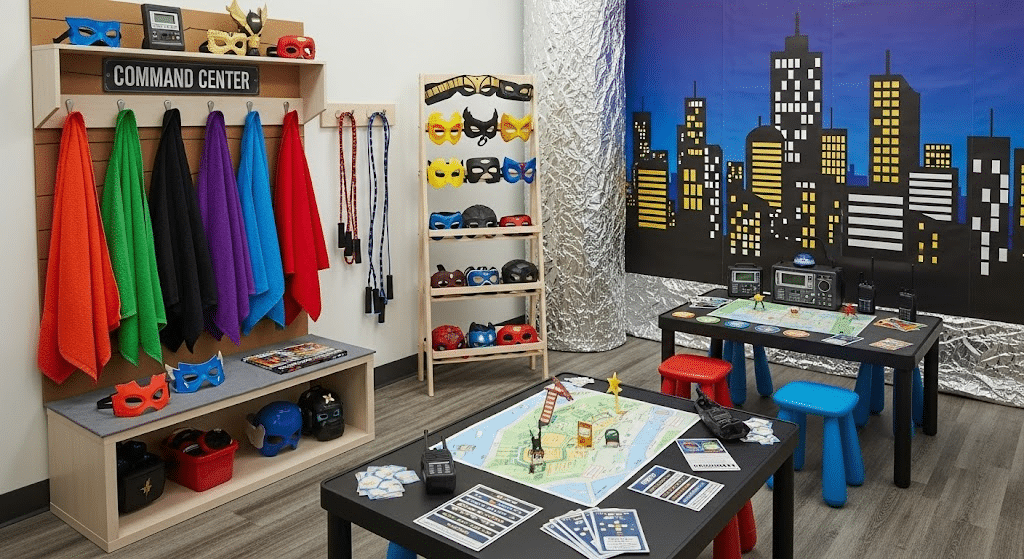
Mighty heroes plan missions and save the world from their secret base. This theme excites children because they can be powerful protectors and problem-solvers.
- How to Set It Up: Create a command center with maps and communication devices. Build training areas for superhero exercises. Add a costume changing station.
- Helpful Props & Resources: Capes (towels work perfectly), masks, belts, walkie-talkies, city maps, mission cards, and simple exercise equipment like jump ropes.
8. Post Office
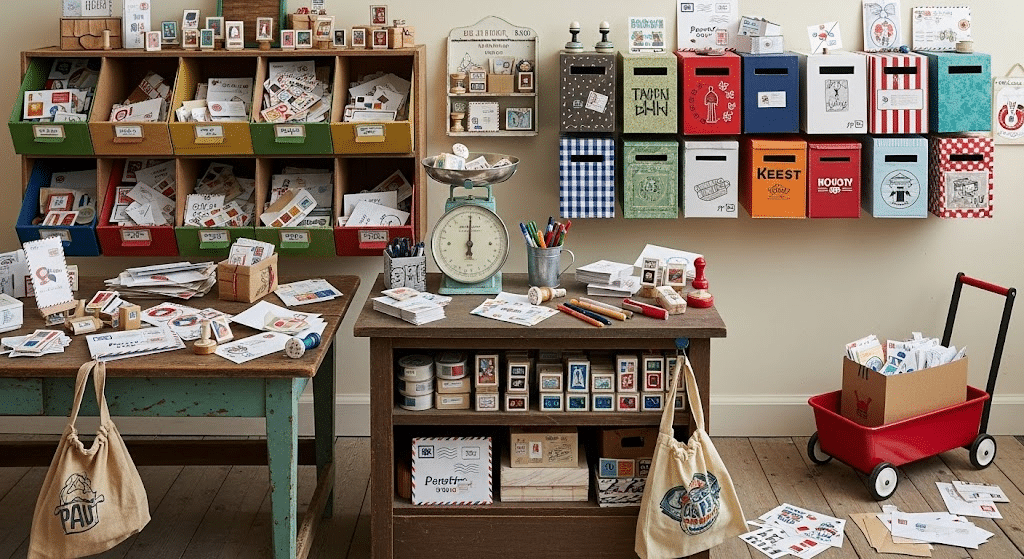
Brief Overview: Mail carriers sort letters and deliver packages throughout the community. Kids enjoy this because they love mail and can practice writing and organizing.
- How to Set It Up: Create sorting bins for different addresses. Set up a service counter with scales. Make mailboxes using shoeboxes or paper bags.
- Helpful Props & Resources: Envelopes, stamps (stickers), packages, mailbags, scales, pens, address labels, and a cart or wagon for deliveries.
9. Restaurant Roleplay

Chefs cook meals while servers take orders and serve customers. This popular theme helps children practice social skills and learn about different foods.
- How to Set It Up: Create a kitchen area with cooking space. Set up dining tables with chairs. Add a host station with menus and a waiting area.
- Helpful Props & Resources: Play food, menus, order pads, aprons, chef hats, plates and cups, cash register, and tablecloths for formal dining.
10. Doctor’s Office
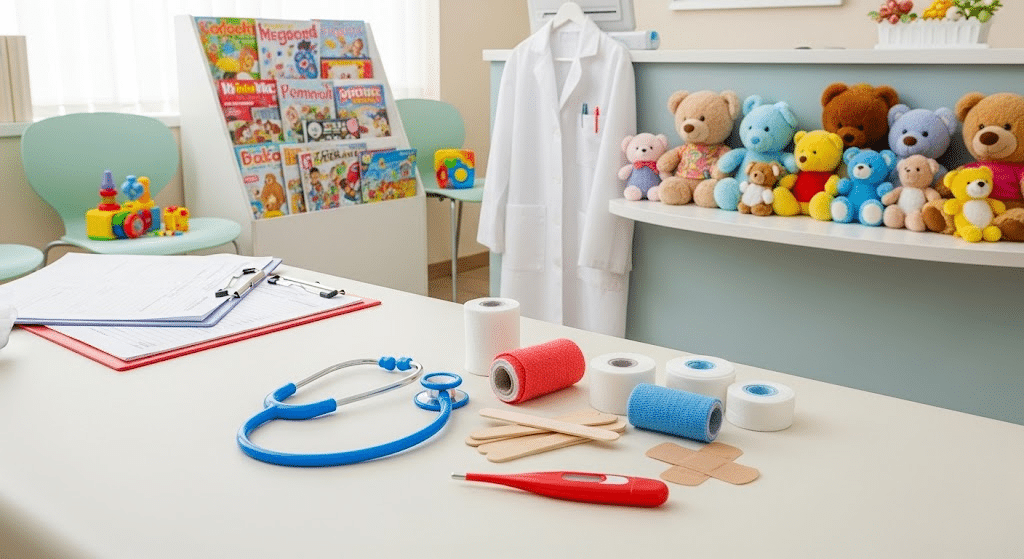
Medical professionals examine patients and help them feel better. Children are drawn to this theme because it helps them process medical experiences and practice caring behaviors.
- How to Set It Up: Create an examination room with a table or bed. Set up a waiting room with magazines and toys. Add a reception area for check-ins.
- Helpful Props & Resources: Toy stethoscope, bandages, tongue depressors, thermometer, clipboard with forms, white coats, and dolls or stuffed animals as patients.
11. Construction Site

Hardworking builders construct buildings and fix things around the site. This hands-on theme appeals to children who love building and problem-solving with their hands.
- How to Set It Up: Create work zones with different construction tasks. Use blocks and building materials. Set up a planning area with blueprints and tools.
- Helpful Props & Resources: Toy tools, hard hats, building blocks, measuring tape, clipboards for work orders, safety vests, and vehicles like dump trucks and bulldozers.
Play Prompts That Let Kids Take the Lead
The best dramatic play happens when adults step back and let children take charge. Parents can support without controlling the experience.
- Ask open-ended questions like “What happens next?” or “How does your character feel?” These prompts spark deeper thinking without directing the story.
- Let children lead completely. They should choose themes, assign roles, and create plot twists. Adult interference often stops creative flow.
- Rotate roles regularly. Children love being the boss, teacher, or hero. This builds confidence and lets them explore different perspectives.
- Add storytelling books or simple scripts as inspiration. But remember—children should adapt these ideas, not follow them exactly. The goal is sparking imagination, not perfect performance.
Conclusion
Dramatic play ideas offer more than entertainment, they build the foundation for lifelong learning and growth.
When children step into different roles, they develop language skills, emotional intelligence, and problem-solving abilities that serve them well beyond childhood.
Parents and educators should welcome the beautiful chaos that comes with imaginative play. Messy living rooms become hospitals. Kitchen tables turn into restaurants. These moments of creative freedom shape confident, capable children.
The research is clear; dramatic play isn’t just fun, it’s essential for healthy development. This week, choose one simple idea from this blog and watch magic happen. Your child’s imagination is waiting to soar, and all they need is permission to begin.


